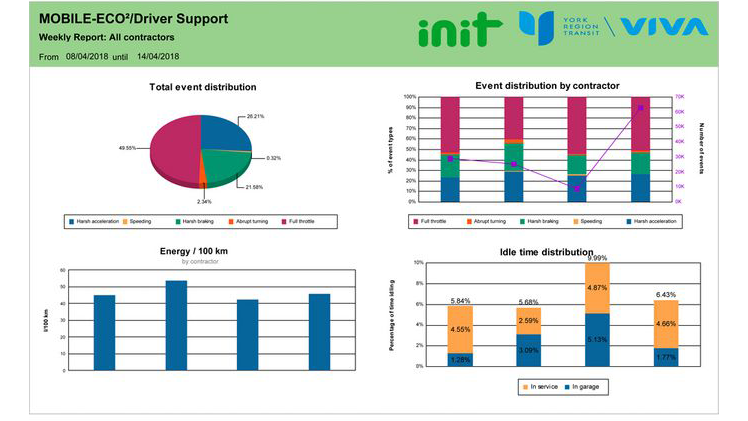Do your buses already run energy-efficiently?
The sharp rise in energy costs in 2022 and the decline in revenues due to the pandemic are forcing transport companies to examine their processes and cost structures more than ever before. Especially 0since experts predict a further significant increase in electricity prices by 2030. Even the most favorable forecasts assume that electricity prices will remain more expensive than in the years before 2020 due to the global political situation.
Few factors have such a considerable impact on your bus fleet’s energy consumption as your drivers’ driving style. A study by the US Department of Energy shows just how significant the savings potential can be: an aggressive driving style leads to higher fuel consumption of between 10 and 40 percent. At current prices, this can quickly cause costs to spiral. The same applies to stationary vehicles with the engine running. With MOBILEefficiency the INIT Group offers a powerful assistance system for safe and energy-efficient driving that is appropriate for diesel-powered vehicles as well as for electric buses.
MOBILEefficiency: Saving fuel or power by optimizing driving behavior
MOBILEefficiency ensures that:
- buses are operated economically
- dwell times with the engine running are avoided
- the driver is informed directly about events in real time
- safety increases significantly
Encourage energy-efficient driving with MOBILEefficiency
The on-board computer monitors the vehicle’s data streams such as speed, rpm, acceleration, position, distance travelled and, of course, energy consumption. In addition, identification data is stored that enables an assignment to a specific vehicle, driver, trip, circulation and route. With the help of algorithms, the on-board computer detects dangerous or uneconomical driving styles and provides the driver with real-time feedback on excessive revving, unnecessarily long dwell times with the engine running, heavy acceleration or braking or excessive speed.
The on-board computer transmits the log of the entire journey with all data and events to the central system, where they can also be used anonymously. This data can be used to train staff to drive more economically and more safely in the future. Carrying out this analysis anonymously ensures that individual drivers are not highlighted.Public transport companies can choose different models to use MOBILEefficiency. For example, drivers can take part on a voluntary basis or be encouraged to participate by receiving a percentage of the fuel savings in the form of a bonus.

Increased economic efficiency and safety – the York Region Transit example
The extent to which MOBILEefficiency can increase economic efficiency and safety is demonstrated by a Canadian transport company: York Region Transit (YRT) from the Greater Toronto Area. After MOBILEefficiency was installed on their buses, fuel consumption was reduced by 40 percent in just four months. Unnecessary dwell times were also reduced by nearly 40 percent. In one year, unsafe and uneconomical driving behavior was reduced by 75 percent.
Learn more about the YRT project in the video:
Click here for more energy saving solutions from CarMedialb and the INIT Group:
- https://www.carmedialab.com/en/public-transport/charge-management/
- https://www.carmedialab.com/en/public-transport/vehicle-health-monitoring-2/
- https://www.initse.com/ende/news-resources/knowledge-database/2022/save-energy-costs-in-block-planning/
- https://www.initse.com/ende/news-resources/knowledge-database/2022/saving-energy-costs-efficient-service-through-on-demand-trips/
In cooperation with INIT, the world’s leading provider of integrated IT solutions for public transportation, we have developed solutions aimed at giving you a better overview of your bus fleet. Use the data from your vehicles and charging stations to your advantage.





